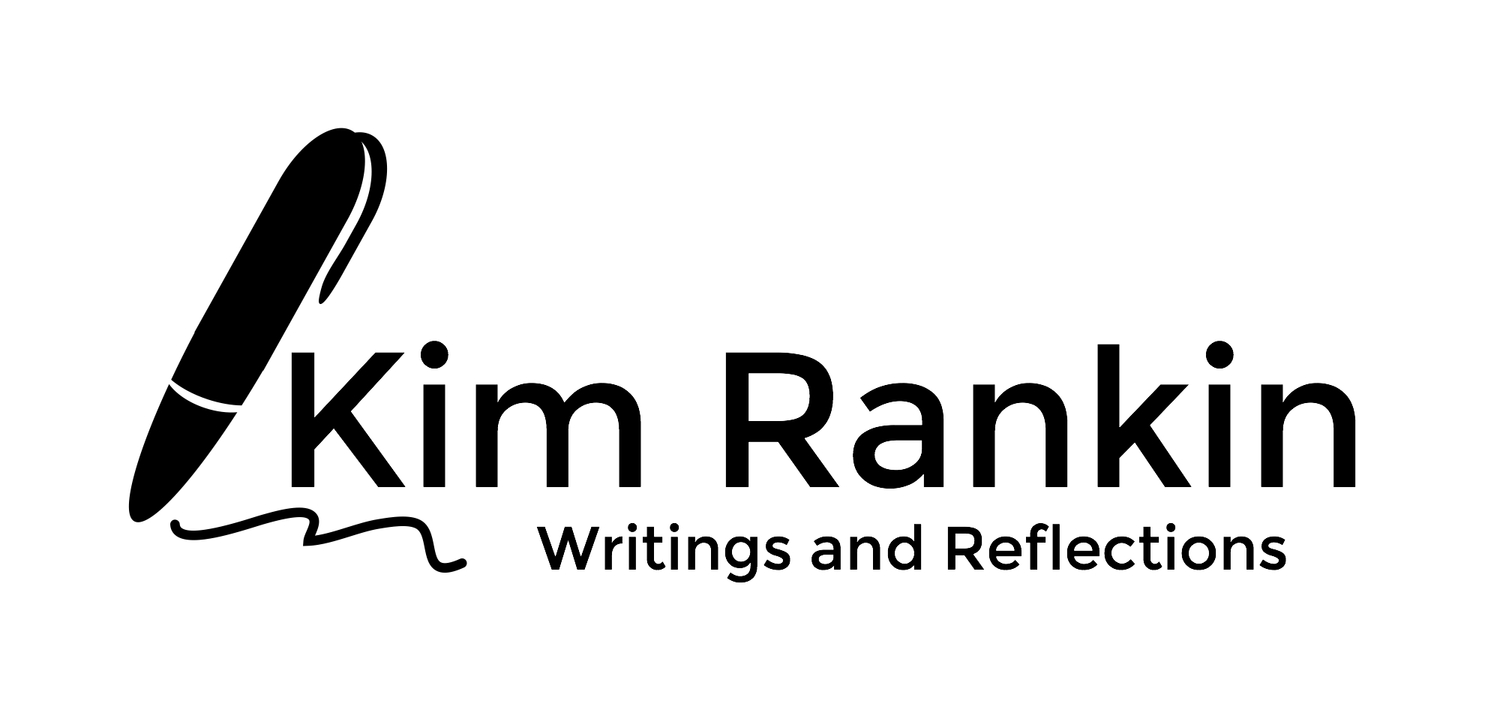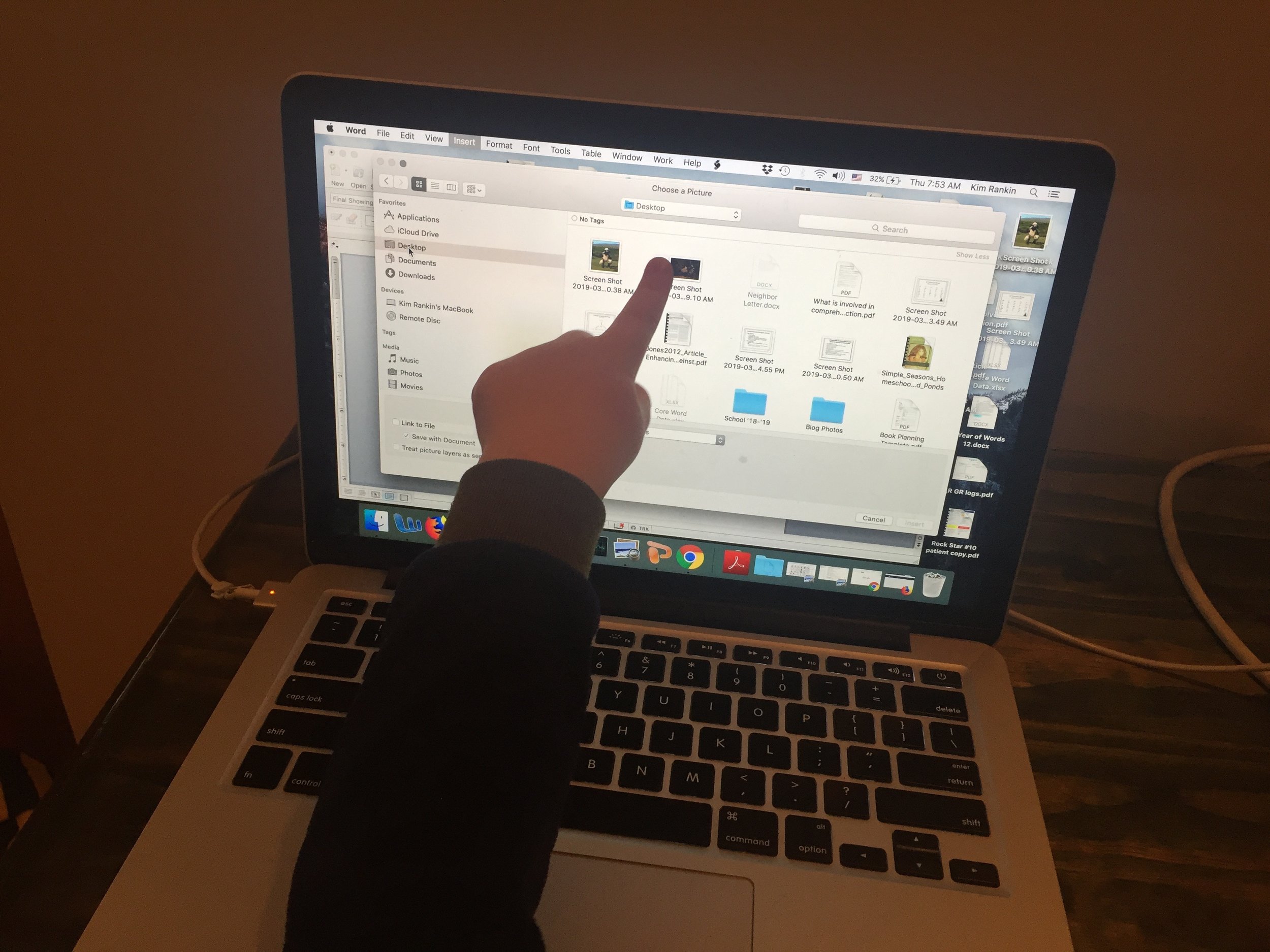Encouraging Emerging Independent Writing Skills in an AAC User
Updated 11/7/2019 This blog post was the 2nd most read post for 2019. It has been edited to include a donation button for this week only. I invite you to donate toward our web site maintenance costs.
I spent the last three days in Cleveland, Ohio at a intensive introductory course titled Comprehensive Literacy Instruction for Students with Significant Disabilities and Complex Communication Needs. It was twenty-four hours of lectures focused on teaching conventional literacy.
Nathaniel’s literacy skills have come a long way in the past two years since I first started using the strategies learned from Carole Zangari and Lori Wise’s Tell Me Program - AAC in the Preschool Classroom. In my twenty-five years as a home based educator, I’ve learned that catching a vision for where we are headed often helps me stay the course. I went to Cleveland hoping to learn what’s next. Monday’s information helped me realize Nathaniel has developed strong early literacy skills and that transitioning to conventional instruction can likely happen sooner than I expected.
I caught a much broader literacy goal for Nathaniel this week. Quoting Drs Karen Erickson and David Koppenhaver, the course presenters, I want Nathaniel to be able to “communicate anything he wants, any time he wants, to anyone he wants.” Our work in communication with Nathaniel’s AAC device is one tool he can use to communicate. So are the sign language, gestures, mouth clicks, facial expressions, and breathing changes he loves to use. But the alphabet is the only tool that will ultimately open the door for Nathaniel to communicate anything he wants, anytime he wants, to anyone he wants. Teaching Nathaniel to read and write is critical.
I saw some holes in my teaching as I listened to the training. I planned to come clean on those and write a blog post some time before Monday about how I am tweaking my approach with these new bigger goals in mind. One of those areas in the limited attention I’ve given to Nathaniel’s independent writing. The events of our morning, and my excitement about immediately implementing strategies I learned from David and Karen, demand that I share today.
In my defense, I have good reasons to have neglected Nathaniel’s independent writing. He has a complicated body when it comes to trying to write. His hand surgeon suspects Nathaniel’s brain wants to be right hand dominate. But he was born with “thumb in the plane of the hand” on his right hand. Essentially, while formed correctly, the thumb didn’t sit in the right place. It couldn’t oppose his fingers. Additionally, Nathaniel experienced a brain bleed as a newborn leaving right side extremity weakness. He had hand surgery at age two and we’ve been in weekly occupational therapy since he was a newborn to support these difficulties. The right hand is still limited in function and strength. He must learn to use his non-dominate hand for writing.
In a world where composing thought on paper means using your hands, I saw only this road block. All homeschool and traditional school curriculum I’ve explored relies on developing fine motor skills and letter formation with a traditional pencil, crayon, or marker to teach literacy skills. After working daily for two years on letter writing, Nathaniel can manually produce letters that have straight lines: I, T, L, E, F with his left hand. This is improvement. But the freedom to communicate what is in his head will be severely restricted if I wait for his left hand to be able to write letters.
In conversations with Carole and Lori a few years ago, they encouraged me to consider alternative pencils and independent writing to support our alphabet and phonological awareness learning. I researched alternative pencils. But this continued to be a deficit in my teaching as I focused more on our weekly OT hand strength goals. I think each month I was hoping this would be the month there would be amazing gains and we would be able to move into the conventional teaching resources. The videos and information shared at the workshop this week showed where we are headed with independent writing; they helped me see how I can get going now. I asked Karen questions a number of times. Poor woman… even when she was washing her hands in the bathroom! I connected with Tina Moreo, organizer of the workshop, on tools to use with Nathaniel. I came home with a pretty good plan on how to start offering Nathaniel more independent writing opportunities… on Monday.
And then Nathaniel ran ahead of the plan this morning.
(Therapists - ever tire of parents running ahead of you in your plan? It’s because we see our kiddos running ahead of all of us ALL THE TIME.)
Now the story.
Nathaniel needs respiratory treatments every morning. He often watches a twenty minute video on my computer during this time. This morning he used his AAC device to let me know he wanted to watch an episode of Shaun the Sheep. I gathered our medical supplies, and he got my laptop. The last thing I had worked on was a personal letter. It was still pulled up on a word processor. When I opened the laptop, I immediately noticed that Nathaniel had already had the laptop open and had added some writing to my letter.
Prior to the training this week, I would have freaked. “WHAT are you doing? THAT is an important letter I’m working on!” What and that are not capitalized in that sentence because I would have calmly used the opportunity to model those words on Nathaniel’s device, but because of the volume they would have been shouted. Today, I saw these marks as evidence of what Nathaniel already knows about literacy.
He recognizes a word processor as a place to write things down.
He knows he can use the keyboard on a laptop to write letters.
He sees himself capable of doing this and is willing to take the risk of trying.
He believes he has something to contribute to whatever Mom was doing, and that writing letters is a way to help her.
Today, because of the workshop, my next response was different.
“Oh, I see you were helping me write the letter I was working on. Let’s take a look at that.”
I enlarged his text to 30 ppt font so we could see it better. I asked, “What were you writing about?”
Nathaniel went to his device and said, “sheep, dog, movie.”
"Oh…. I bet you were writing a note to remind me that you wanted to watch a movie with a sheep and dog.” Head nod. “Yes, Shaun the sheep is about a sheep and a dog.”
For doubters… Yes, Nathaniel could have said sheep, dog, movie at this moment to simply remind me that it was time to watch the movie. Perhaps what he said on his device at this point had nothing to do with what he had doing on my laptop. But babbling babies don’t have to speak in perfectly articulated sentences before we contribute meaning to their efforts to communicate. Neither does Nathaniel. In the absence of ever being able to audibly babble, this beginning independent effort at communicating through writing has to be given the same generous assumption. If he agrees that his writing was to remind me about watching that movie, then that’s what it is.
We started the treatments and Nathaniel watched the movie. I paused the movie twice and took screen shots so we would have some pictures to work with. After the movie, I opened a new document, copied and pasted Nathaniel’s writing to a clean page, and let him decide which pictures to put with his writing. He wanted both of them. We printed his letter. This took less than two minutes of our morning. I did NOT erase Nathaniel’s writing on my letter. I thanked him for writing to me and closed the laptop. I will erase it later when he isn’t watching.
Then we sat down side by side and talked about his writing using his AAC device.
“I see you wrote a K. It represents the sound /k/ like in the word kicking. Look! The sheep is kicking the ball! And you wrote a B too, like in ball!”
I did not notice these letters when I took the screen shot of the movie. After it was printed, I looked for some way to contribute meaning to what I saw in Nathaniel’s text. I modeled I SEE, YOU WROTE, LOOK SHEEP KICKING BALL on Nathaniel’s device while commenting on his writing. I pointed out that > was not a letter and modeled NOT on Nathaniel’s AAC device. The line “KOB>” was the only one I commented on.
Then I yelled for Nathaniel’s brother to come take a picture quick because this amazing literacy experience was happening before 8 am. Before I could even get my wet hair out of a towel!
And then our conversation was over. Again less than two minutes. Nathaniel wanted to spend time with Peter. Nathaniel’s letter about the sheep, dog, and movie were set aside. Perhaps we will show it to Dad tonight. Perhaps not. We have plans. It might be forgotten. And that is ok. Because, I write things every day that get set aside after they serve their purpose. Nathaniel says the purpose of writing this morning was to remind me that he wanted to watch Shaun the Sheep. My purpose in slowing down our morning to focus briefly on literacy was to let him know that he can use writing to communicate, that letters become words and words convey meaning, and that everything he shares with me through writing has value.
Now on with our day and spring break week.










